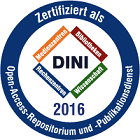Functional and Molecular Characterization of Tolerized Langerhans Cells in Atopic DermatitisMechanistic Insights into the TLR2-NF-κB Signaling Pathway

Functional and Molecular Characterization of Tolerized Langerhans Cells in Atopic Dermatitis
Mechanistic Insights into the TLR2-NF-κB Signaling Pathway

| dc.contributor.advisor | Bieber, Thomas | |
| dc.contributor.author | Deng, Yuxuan | |
| dc.date.accessioned | 2025-11-07T10:23:21Z | |
| dc.date.available | 2025-11-07T10:23:21Z | |
| dc.date.issued | 07.11.2025 | |
| dc.identifier.uri | https://hdl.handle.net/20.500.11811/13657 | |
| dc.description.abstract | Atopic dermatitis (AD) represents the most common chronic, inflammatory, and recurrent disease intricately influenced by genetic and immune factors, with environmental interactions playing a pivotal role. Epidermal Langerhans cells (LC), as primary antigen-presenting dendritic cells (APC) in the epidermis, serve as indispensable intermediaries bridging the innate and adaptive immune systems. Recognizing microbial signals through various pattern recognition receptors (PRRs) like Toll-like receptors (TLR) on APC triggers LC activation, cytokine production, and subsequent T-cell responses. Notably, TLR2 is implicated to sense Staphylococcus aureus (S. a.) from the skin's microbiota and has a high prevalence in AD skin. Thus S. a. contributes to the pathogenesis of the disease. This study investigated the molecular and functional properties of LC within the TLR2 signaling pathway in AD, shedding light on the underlying mechanisms governing these cells. Previous findings revealed TLR2 signaling tolerance in LC isolated from AD lesions, indicating an impaired S. a. sensing. The hypothesis of this study is that LC tolerization results from persistent TLR2 stimulation in AD lesions, attributable to increased S. a. colonization. The objective was to replicate tolerized LC observed in AD in vitro, comprehensively study their molecular and functional characteristics and explore strategies to restore TLR2-induced activation. To address this, an in vitro model was established as part of this work. LC were generated from CD34 hematopoetic stem cells (CD34LC) and persistent microbial pathogen stimulation in AD skin lesions was mimicked by repetitive TLR2 triggering. Tolerization of CD34LC was characterized by impaired maturation, reduced expression of migratory molecules, and diminished migratory capacity upon stimulation. Thus, the model mirrored hallmarks of skin LC in AD. Additionally, there was an altered cytokine profile, including a lack of IL-6, IL-8, IL-10, and IL-23 release, confirming the impaired LC response. Surprisingly IL-1β and IL-18 levels were increased upon TLR2 stimulation in these cells. This does not only show LC to be a source of these factors under certain conditions, but again shows a parallel to primary skin culture results from AD donors. Taken together, the herein newly established model successfully represents LC from AD skin. Exploring potential mechanisms in tolerized LC, the signaling molecules of the TLR downstream signal pathway were addressed. The unresponsiveness of LC was accompanied by elevated negative regulators SOCS1 and IRAK-M, while the molecules of the activatory line were hardly affected. In order to restore the functionality, several agents were addressed. JAK1/2 inhibitors partially restored the activated phenotype of tolerized LC via a SOCS1 downregulation. In conclusion, this study sheds light on the involvement of hyporesponsive LC in AD pathogenesis by dissecting the functions and underlying molecular mechanisms of tolerized LC. The central role for negative regulators including SOCS1 and the potential of JAK1/2 inhibitors to decrease SOCS1 and to restore maturation in these cells offers novel insights into the mode of action of JAK inhibitors in AD therapy. | en |
| dc.language.iso | eng | |
| dc.rights | Namensnennung 4.0 International | |
| dc.rights.uri | http://creativecommons.org/licenses/by/4.0/ | |
| dc.subject.ddc | 570 Biowissenschaften, Biologie | |
| dc.subject.ddc | 610 Medizin, Gesundheit | |
| dc.title | Functional and Molecular Characterization of Tolerized Langerhans Cells in Atopic Dermatitis | |
| dc.title.alternative | Mechanistic Insights into the TLR2-NF-κB Signaling Pathway | |
| dc.type | Dissertation oder Habilitation | |
| dc.publisher.name | Universitäts- und Landesbibliothek Bonn | |
| dc.publisher.location | Bonn | |
| dc.rights.accessRights | openAccess | |
| dc.identifier.urn | https://nbn-resolving.org/urn:nbn:de:hbz:5-86176 | |
| dc.relation.doi | https://doi.org/10.1111/all.16641 | |
| ulbbn.pubtype | Erstveröffentlichung | |
| ulbbnediss.affiliation.name | Rheinische Friedrich-Wilhelms-Universität Bonn | |
| ulbbnediss.affiliation.location | Bonn | |
| ulbbnediss.thesis.level | Dissertation | |
| ulbbnediss.dissID | 8617 | |
| ulbbnediss.date.accepted | 25.09.2025 | |
| ulbbnediss.institute | Medizinische Fakultät / Kliniken : Klinik und Poliklinik für Dermatologie und Allergologie | |
| ulbbnediss.fakultaet | Medizinische Fakultät | |
| dc.contributor.coReferee | Förster, Irmgard |
Files in this item
This item appears in the following Collection(s)
-
E-Dissertationen (2069)




